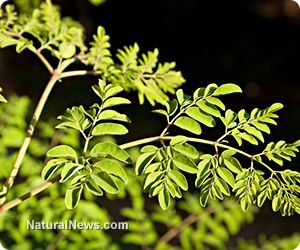Gene Logsdon unveils the flavor, beauty and smart economics powerhouse in your garden
- In "Successful Berry Growing," Gene Logsdon writes that berries offer unmatched flavor, beauty and financial rewards with minimal effort. Homegrown varieties surpass store-bought in taste and cost-efficiency, yielding bountiful harvests for personal or small-scale commercial use.
- Beyond fruit production, berry plants enhance gardens aesthetically. Blueberries blaze with red fall foliage, strawberries make charming borders, and vines like black raspberries add visual drama.
- Even small-scale berry farming can be lucrative (e.g. $2,500 per acre with a roadside stand). Logsdon highlights examples like harvesting $11.20/hour worth of blueberries or recouping grocery costs with minimal investment.
- Berries thrive without chemical treatments; natural mulching (straw, sawdust, grass clippings) suppresses weeds, enriches soil and reduces reliance on irrigation or synthetic fertilizers.
- Logsdon frames berry growing as a path to self-sufficiency – combining practicality, ecological stewardship and the joy of harvesting nature's generosity with simple, effective techniques.
Gene Logsdon's "
Successful Berry Growing: How to Plant, Prune, Pick and Preserve Bush and Vine Fruits" is a rich resource for both novice and experienced gardeners. It offers invaluable insights into the art and science of cultivating berries.
Berries are not just delicious; they are a celebration of nature's generosity, providing beauty, unmatched flavor and financial rewards with relatively little effort. Whether for personal enjoyment or small-scale commercial growing, berries prove to be a wise investment. Berry bushes yield bountiful harvests that rival and often surpass store-bought alternatives in taste and affordability.
One of the greatest joys of growing berries is their visual appeal. A garden adorned with blueberry bushes heavy with dusky blue fruit or black raspberries glistening like gemstones is a sight to behold.
Even when not in fruit, berry plants contribute year-round beauty. Blueberries and whortleberries dazzle with fiery red foliage in autumn, while ever-bearing strawberries make charming borders in flower beds.
Yet aesthetics are just the beginning, as the true magic lies in taste. Homegrown strawberries ripened under the sun burst with sweetness no supermarket berry can match. Similarly, fall-bearing red raspberries and rare yellow varieties offer delights that are hard to find commercially.
Beyond flavor, growing berries is a smart financial decision – with Logsdon illustrating this with practical examples. His family enjoyed two quarts of strawberries worth at least $75 from the store, but spent only $14 on plants and minimal labor. In another instance, 15 minutes of blueberry picking yielded $2.80 – an hourly equivalent of $11.20.
For those considering berry farming, even small-scale operations can be lucrative. With just an acre of popular berries and a roadside stand, growers can earn $2,500 or more without expensive equipment. Berries level the playing field for small farmers and homesteaders – making organic, profitable agriculture achievable.
Organic methods shine in berry cultivation as Logsdon's experience demonstrates. Unlike tree fruits, berries thrive without chemical sprays – Logsdon has never needed insecticides for his plants. Even fungal diseases like gray mold rarely justify fungicides, as nature often balances outbreaks on its own.
Weed control may require more effort, but organic techniques like mulching enrich the soil while suppressing unwanted growth. Mulching is essential – guarding against winter freeze-thaw cycles, retaining moisture in droughts and steadily improving soil structure. Organic matter accumulates after years of mulching, reducing the need for irrigation and commercial fertilizers while providing slow-release nutrients.
Choosing the right mulch depends on availability and plant needs. Straw, grass clippings, oak leaves or even recycled materials like newspapers can be effective. Sawdust mixed with manure is ideal for blueberries, while shredded corn stalks work well for brambles.
The benefits are undeniable. Mulched berries endure harsh conditions better, yielding healthier plants and higher harvests.
Logsdon's book goes beyond gardening – it's a manifesto for reclaiming flavor, beauty and financial independence through berries. His enthusiasm is infectious, proving that these small fruits can have an outsized impact on gardens, diets and livelihoods.
The berry revolution is within reach: ripe, rewarding and waiting to be picked. With Logsdon's guidance, a little effort and the right mulch, anyone can turn their garden into a thriving, fruitful haven.
Watch this video about Gene Logsdon's book
"Successful Berry Growing: How to Plant, Prune, Pick and Preserve Bush and Vine Fruits."
This video is from the
BrightLearn channel on Brighteon.com.
Sources include:
Brighteon.ai
Brighteon.com
 Parler
Parler Gab
Gab










